From the February 2024 issue of Apollo. Preview and subscribe here.
The intimate relationship between food and Eros has always been a subject for gossip and quasi-medical beliefs, usually involving the heart or the reproductive organs. The way to a man’s heart is through his stomach, ideally by way of red meat, though oysters are also effective. The way to a woman’s heart (or lower) is via chocolate. On 14 February, restaurants will be brimming with couples and supermarket aisles with ‘meal deals’ for two, putting these beliefs to the test. Why then are there no dishes or treats traditionally associated with Valentine’s Day, as there are for other still-cherished festivals, Christmas, Easter or Halloween? Other celebrations of affection, such as weddings and birthdays, have their cakes. Folklore records odd (and thankfully lapsed) divination customs, such as the one at Saint Agnes’s Eve or Midsummer when young women nibbled special ‘dumb cakes’ of flour, salt, soot and their own wee so that they might dream of their future spouses.
Even discounting the misty stories of Christian martyrs (who might or might not have written love letters), folk customs around Valentine’s Day have a long history. Chaucer dreams of ‘Seynt Valentynes day, Whan every foul (fowl) cometh ther to chese his make (mate)’ in the Parliament of Fowls; and in Hamlet, poor, mad Ophelia sings a song about a maid losing her virginity to a faithless lover on Valentine’s Day.
But the unfoodiness of Valentine’s Day is, I think, because it took off as a celebration (and a business) after two historical shifts. The first was a decoupling of the celebratory year and the farming calendar because of advances in livestock husbandry. Before this, the Christian festivals were a way for the Church to buttress the needs of the agricultural – using up fresh resources at Christmas, Easter, Pancake Day or Harvest Festival, keeping meat and dairy off the menu to let livestock reproduce during Lent.
The second was a profound change in what people believed food was for. In Anglo-Saxon, medieval and Tudor times, food was medicine; good health (especially reproductive health) relied on the right diet. Particularly arousing (and therefore, people assumed, good for fertility) were phallic-shaped parsnips, carrots and turnips, not to mention the vulva-like oyster. Windy foods such as beans and pulses (naturally) helped puff up the male erection; warming spices, especially spiced wine, and red meat all helped in the production of semen. Seeds such as caraway or fennel were associated with fertility and had the additional advantage of freshening the breath.
The New World offered a menu of far more erotic possibilities. Aztec beliefs about the potency of the hot, fiery drink known as chocolate were eagerly embraced by Europeans, who replaced the chilli with sugar, increasingly available from the ‘Sugar Islands’ of the Caribbean. ‘Let the sky rain potatoes,’ says Falstaff – he means sweet potatoes, regarded as an aphrodisiac – in expectation of sport with some merry wives of Windsor. Tomatoes were long known as pommes d’amour, apples of love. These suggestive riches helped inspire a whole new genre of painting: the still life. At the recent Frans Hals exhibition in London, Claes Jansz. van Heussen’s magnificent fruit and vegetable stall, with a figure of a young woman seller painted by Hals, was eye-catchingly seductive. Among the tumbling onions, knobbly citrons, rounded quinces, grapes and medlars (known as ‘open-arse’ for their shape) is a relatively new taste from the Americas – a pumpkin, cut open to reveal its orange flesh and seeds. At the other side of the barrow, Hals has half-turned the fruit seller towards the viewer and has her looking archly at us over her shoulder. For those inclined to see it, the suggestive pumpkin is on the same plane as her sexual parts.
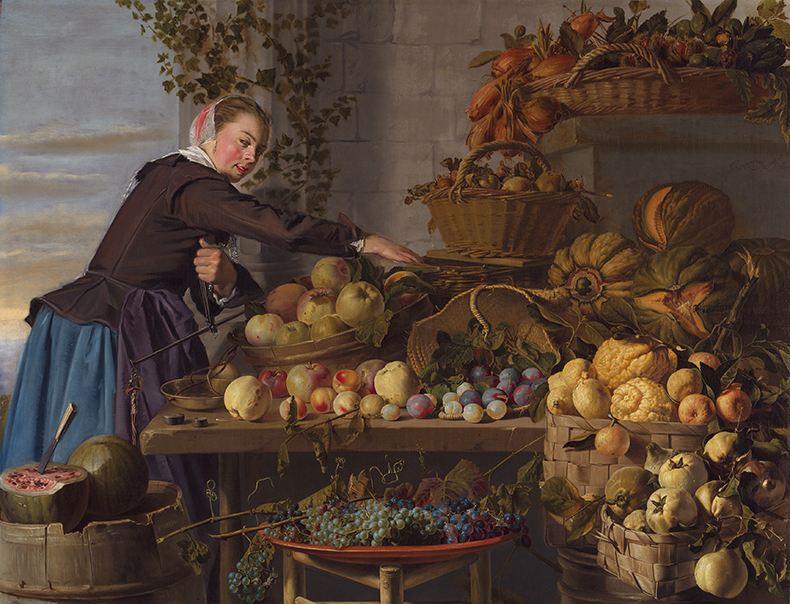
Young Woman with a Display of Fruit and Vegetables (1630), Claes Jansz. van Heussen and Frans Hals. Private collection. Photo: National Gallery, London
By 1630, the date of this picture, exotics from the Mediterranean and the New World had taken the place of everyday foods such as root veg and pulses as far as popular beliefs about reproductive vigour were concerned. More broadly, home-grown food began to be thought of as a commodity, in service to the economic health of the nation rather than the physical health of the individual, particularly as the British ‘nation’ expanded to include Scotland, the Empire and a rapidly growing population. Agricultural land was ‘improved’ to fuel national wealth; root crops and beans were diverted to livestock to produce more roast beef for wealthy dinner tables or salted meat for the navy’s colonial enterprises.
When Valentine’s Day began to be seen as a business opportunity, it was not for the nation’s farmers and bakers in the way that a medieval or Tudor feast would have been, but for a new industry making greetings cards. The union of chocolate and Valentine’s Day is a solidly Victorian enterprise, only possible from mid century, once the technique of making solid, giftable, boxable chocolates had been discovered by the Dutch. The heart-shaped box, a marketing idea which in the 1860s helped save Cadbury’s from ruin, began – at last – an edible Valentine’s Day tradition. It is not one, however, that would be quite as good for the heart as the root veg, beans and pulses so beloved in the past.
From the February 2024 issue of Apollo. Preview and subscribe here.
Unlimited access from just $16 every 3 months
Subscribe to get unlimited and exclusive access to the top art stories, interviews and exhibition reviews.

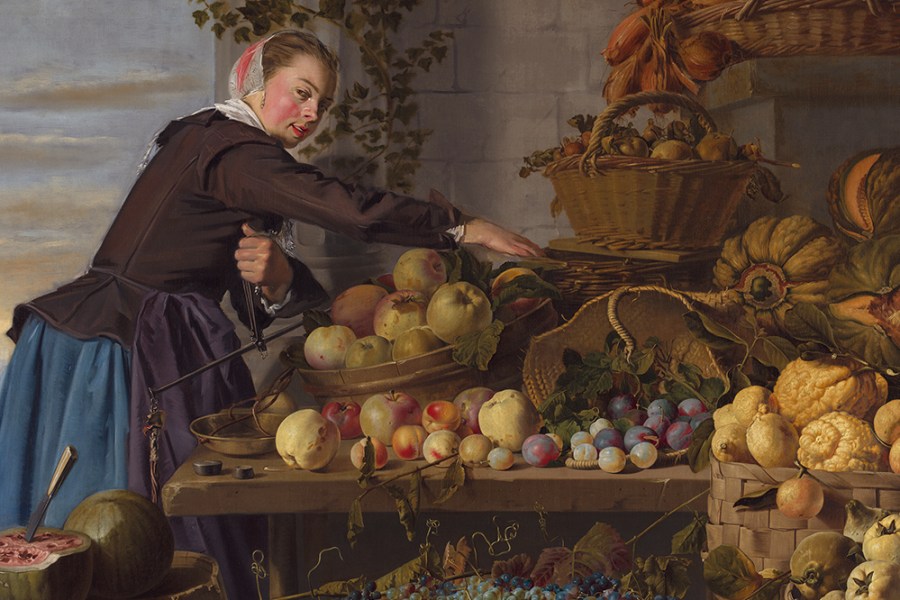
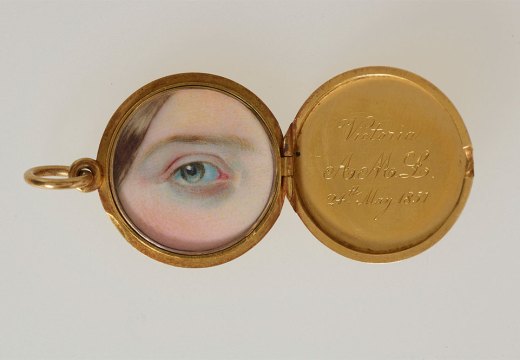
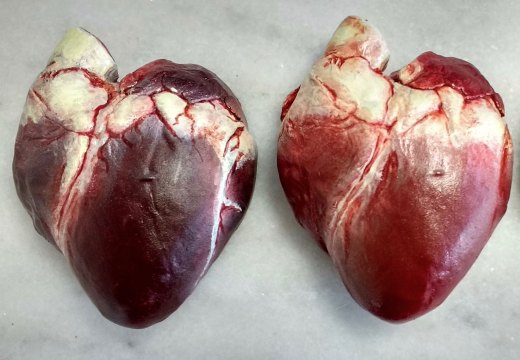
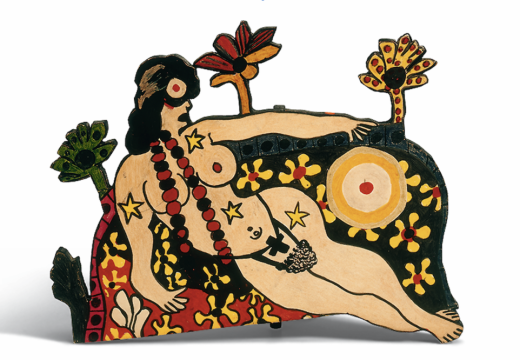









![Masterpiece [Re]discovery 2022. Photo: Ben Fisher Photography, courtesy of Masterpiece London](http://www.apollo-magazine.com/wp-content/uploads/2022/07/MPL2022_4263.jpg)
Has the Fitzwilliam lost the hang of things?